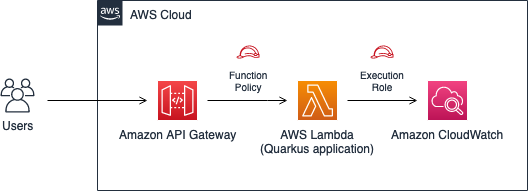AWS Architecture Blog
Category: Front-End Web & Mobile
Optimizing fleet utilization with Amazon Location Service and HERE Technologies
The fleet management market is expected to grow at a Compound Annual Growth Rate (CAGR) of 15.5 percent—from 25.5 billion US dollars in 2022 to USD 52.4 billion in 2027. Optimizing how your organization uses its vehicle fleet is important for logistics and service providers such as last mile, middle mile, and field services. In […]
What to consider when modernizing APIs with GraphQL on AWS
In the next few years, companies will build over 500 million new applications, more than has been developed in the previous 40 years combined (see IDC article). API operations enable innovation. They are the “front door” to applications and microservices, and an integral layer in the application stack. In recent years, GraphQL has emerged as […]
Web application access control patterns using AWS services
The web application client-server pattern is widely adopted. The access control allows only authorized clients to access the backend server resources by authenticating the client and providing granular-level access based on who the client is. This post focuses on three solution architecture patterns that prevent unauthorized clients from gaining access to web application backend servers. […]
Let’s Architect! Architecting for front end
Many workloads in the cloud need a front-end interface for interacting with APIs, either for populating content or for consuming it. This edition of Let’s Architect! shows you how to scale your front-end applications and serve data across multiple devices. Micro-frontend Architectures on AWS Micro-frontends are the technical representation of a business subdomain, they allow […]
Throttling a tiered, multi-tenant REST API at scale using API Gateway: Part 2
In Part 1 of this blog series, we demonstrated why tiering and throttling become necessary at scale for multi-tenant REST APIs, and explored tiering strategy and throttling with Amazon API Gateway. In this post, Part 2, we will examine tenant isolation strategies at scale with API Gateway and extend the sample code from Part 1. […]
Throttling a tiered, multi-tenant REST API at scale using API Gateway: Part 1
Many software-as-a-service (SaaS) providers adopt throttling as a common technique to protect a distributed system from spikes of inbound traffic that might compromise reliability, reduce throughput, or increase operational cost. Multi-tenant SaaS systems have an additional concern of fairness; excessive traffic from one tenant needs to be selectively throttled without impacting the experience of other […]
Seamlessly migrate on-premises legacy workloads using a strangler pattern
Replacing a complex workload can be a huge job. Sometimes you need to gradually migrate complex workloads but still keep parts of the on-premises system to handle features that haven’t been migrated yet. Gradually replacing specific functions with new applications and services is known as a “strangler pattern.” When you use a strangler pattern, monolithic […]
Enriching Amazon Cognito features with an Amazon API Gateway proxy
This post was co-written with Geoff Baskwill, member of the Architecture Enabling Team at Trend Micro. At Trend Micro, we use AWS technologies to build secure solutions to help our customers improve their security posture. Sep 6 2022: Amazon Cognito user pools now support native integration with AWS Web Application Firewall (WAF), with this native […]
Deploy Quarkus-based applications using AWS Lambda with AWS SAM
Quarkus offers Java developers the capability of building native images based on GraalVM. A native image is a binary that includes everything: your code, libraries, and a smaller virtual machine (VM). This approach improves the startup time of your AWS Lambda functions, because it is optimized for container-based environments. These use cloud native and serverless […]
QsrSoft launches Digital Huddle Board in 3 months with AWS serverless and Fire devices
QsrSoft is a software as a service (SaaS) company that develops solutions for clients in the restaurant, hospitality, and retail industries to help them achieve operational excellence. QsrSoft has provided these services for more than two decades and now services over 14,000 locations. QsrSoft started using AWS in 2015 and fully migrated all their workloads […]









